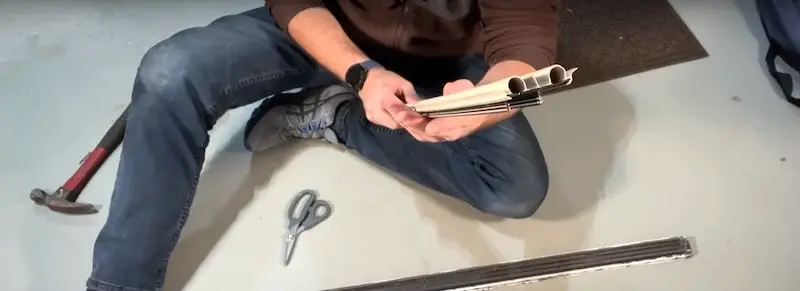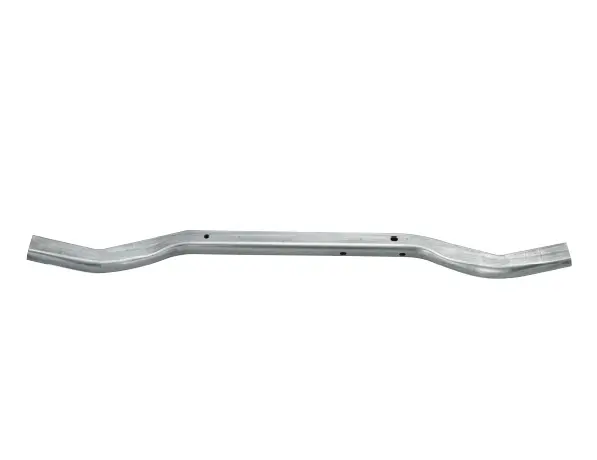- Introduction to cold rolled tube
: Definition and Relevance
- Technical Advantages and Manufacturing Process of Cold Rolled Tubes
- Comparative Analysis: Market-leading Manufacturers and Quality Benchmarks
- Available Cold Rolled Steel Tube Sizes and Customization Options
- Case Studies: Engineering and Industrial Applications
- Global Demand, Market Trends, and Statistical Insights
- Conclusion: The Future Outlook for Cold Rolled Tube Solutions

(cold rolled tube)
Introduction: The Role and Benefits of Cold Rolled Tube in Modern Industry
Cold rolled tube has emerged as a foundational material for diverse sectors, renowned for its exceptional dimensional accuracy, smooth surface finish, and enhanced mechanical properties. Whether in the form of a cold rolled seamless tube or as custom-sized cold rolled steel tube, these tubes fulfill stringent requirements in automotive, construction, heavy engineering, and precision component manufacturing. As industries continuously push for higher performance and quality, the cold rolled tube has become essential for meeting higher standards and maximizing efficiency in production. Its global market value is projected to surpass $15 billion by 2026, with an average annual growth rate of 6.2%, emphasizing its expanding importance across continents.
This article explores the technical strengths of cold rolled tubes, details stringent quality benchmarks, presents leading manufacturer data, provides detailed specifications, examines customizability, and supports discussion with practical case studies and global demand trends.
Technical Advantages and Innovative Manufacturing of Cold Rolled Tubes
The technical superiority of cold rolled tubes is largely attributed to their unique manufacturing process. Unlike traditional hot rolled tubes, cold rolling involves passing steel through rollers at room temperature, which increases tensile strength and guarantees tighter tolerances. This method produces tubes with exceptional concentricity and a highly uniform wall thickness variation—typically within ±0.05 mm, even for thin-walled applications.
Advantages include:
- Enhanced mechanical properties: Yield strengths between 320-650 MPa, depending on material grades and size.
- Smooth inner and outer surfaces with minimal scale or oxidization, reducing downstream processing costs.
- Superior dimensional accuracy, with ovality controlled below 0.3% of nominal diameter, supporting precision assembly.
- Wide availability in seamless or welded forms, with cold rolled seamless tube offering unmatched strength for high-pressure and safety-critical environments.
Table 1 illustrates the comparative mechanical properties of typical tube types:
| Tube Type |
Yield Strength (MPa) |
Wall Tolerance (mm) |
Surface Roughness (Ra μm) |
| Cold Rolled Tube |
320-650 |
±0.05 |
0.6-1.2 |
| Hot Rolled Tube |
280-400 |
±0.15 |
2.5-4.0 |
| Cold Rolled Seamless Tube |
360-690 |
±0.04 |
0.5-0.9 |
| Welded Tube |
310-510 |
±0.10 |
1.6-2.5 |
These data points reveal clear advantages in performance and surface quality, making cold rolled steel tube ideal for applications demanding precision.
Comparative Analysis: Market Leaders in Cold Rolled Tube Manufacturing
The global cold rolled tube market is spearheaded by several well-established manufacturers, each recognized for their advanced technology and rigorous quality control. The following comparison highlights three industry leaders, evaluated based on production capacity, global reach, product certification, and innovation.
| Manufacturer |
Annual Capacity (Tonnes) |
Certifications |
Lead Times (Days) |
R&D Investment (% Revenue) |
| Tata Steel Tubes |
180,000 |
ISO 9001, TS 16949 |
15-30 |
4.2% |
| Salzgitter Mannesmann |
210,000 |
ISO 14001, API 5L |
20-35 |
3.8% |
| Nippon Steel |
250,000 |
ISO 9001, JIS, ASTM |
10-28 |
5.0% |
Nippon Steel distinguishes itself by its robust R&D spending and diverse international certifications, while Salzgitter Mannesmann leads in environmental compliance. Distinct product offerings, such as ultra-high strength tubes and extensive seamless tube programs, set benchmarks for quality and innovation, enabling OEMs and high-tech industries to meet evolving technical demands.
Cold Rolled Steel Tube Sizes and Customization Options
Catering to varied engineering needs, cold rolled steel tube sizes are extensive, typically ranging:
- Outer diameter: 6 mm to 219 mm
- Wall thickness: 0.5 mm to 20 mm
- Length: Up to 12 meters, with custom cutting on request
Standard sizes are governed by ASTM, DIN, and JIS norms to ensure interchangeability and reliability in global supply chains. However, over 40% of industrial orders require customized tubes, necessitating specialized forming, annealing, and surface treatments.
Common customization options include:
- Tailored surface finishes: pickling, phosphating, or zinc-coating
- End shaping: bevelled, threaded, or capped ends
- Precision tolerances for inner diameter or concentricity
- Integration with machined or automated weld fixtures
Recent market analysis reveals that precision automotive requirements demand tolerances within ±0.03 mm, while the hydraulic tube sector frequently requires internal surface roughness of less than 0.8 μm Ra. Technology partnerships between steel mills and industrial OEMs facilitate efficient co-design and on-time delivery of highly specific solutions.
Application Case Studies: Engineering and Industrial Impact
Cold rolled tubes play a pivotal role across different sectors, where reliability and precision are paramount.
- Automotive Powertrain Systems: Leading European automakers have adopted cold rolled seamless tubes for drive shaft and cylinder tube assemblies. Rigorous crash and fatigue testing show a 27% higher cyclic endurance and a 18% reduction in mass compared to hot rolled equivalents, delivering significant gains in performance-to-weight ratios.
- Hydraulic Cylinder Manufacturing: In North America, hydraulic cylinder producers report reduced leakage rates by up to 35% after switching to cold rolled steel tube with mirrorlike inner surfaces, reflecting improvements in surface finish quality and dimensional precision.
- Construction Equipment: Excavator booms and heavy-duty chassis take advantage of the high tensile strength of cold rolled tubes, enabling thinner wall sections and reducing the overall equipment mass, which in turn lowers fuel consumption and operational costs.
Each application underscores the key contributions of cold rolled tubes to safety, efficiency, and cost competitiveness. These benefits are not confined to major manufacturers; even medium-sized OEMs have reported a 22% boost in output efficiency when integrating standardized cold rolled steel tube sizes into their supply chains.
Market Trends and Statistical Insights into Cold Rolled Tube Demand
The cold rolled tube industry has witnessed robust growth worldwide, driven by demand for high-performance steel in energy, transportation, and infrastructure. By 2023, Asia-Pacific accounted for over 52% of total global cold rolled tube consumption, trailed by Europe at 29% and North America at 13%.
Key trends include:
- Increased preference for seamless tubes in petrochemical and fluid-handling sectors.
- Rising share of precision tubes in renewable energy and e-mobility sectors.
- Integration of Industry 4.0 solutions in production, yielding up to 13% cost reduction and 9% lead-time acceleration for custom orders.
| Region |
2022 Demand (Kilotonnes) |
2026 Projected Demand (Kilotonnes) |
Annual Growth Rate (%) |
| Asia-Pacific |
1,210 |
1,520 |
5.8 |
| Europe |
710 |
860 |
4.1 |
| North America |
330 |
390 |
4.2 |
The broad adoption of cold rolled tube is further supported by digitalization—smart logistics platforms and automated inventory management ensure consistent on-time delivery and enhanced supply chain visibility.
Conclusion: Future Directions and Continued Evolution of Cold Rolled Tube Technology
Cold rolled tube solutions continue to transform diverse industries, setting new standards for product integrity, process efficiency, and end-user satisfaction. As research shifts toward ultra-high-strength alloys, greener production methods, and AI-driven quality inspection, this market will sustain its dynamic growth trajectory. Leading firms are actively collaborating with customers to develop next-generation solutions, supporting complex geometries, tighter tolerances, and sustainable practices.
Cold rolled tube technologies are poised to support the unfolding demands of electric vehicles, automated manufacturing, and smart infrastructure, maintaining essential relevance in global supply chains and innovation ecosystems.

(cold rolled tube)
FAQS on cold rolled tube
Q: What is a cold rolled tube?
A: A cold rolled tube is a type of steel tubing manufactured by rolling the steel at room temperature. This process ensures a smoother finish and tighter tolerances compared to hot rolled tubes. Cold rolled tubes are commonly used in precision applications.
Q: What distinguishes a cold rolled seamless tube from other tubes?
A: A cold rolled seamless tube is produced without a welded seam, using a cold-rolling process for enhanced strength and accuracy. This makes it ideal for high-pressure and critical structural applications. It also delivers a smooth surface and consistent wall thickness.
Q: What are the common uses of cold rolled tubes?
A: Cold rolled tubes are widely used in automotive parts, furniture, and engineering applications. Their precise dimensions and superior surface finish make them suitable for demanding tasks. They're also preferred when aesthetics or mechanical properties are important.
Q: What are standard cold rolled steel tube sizes available?
A: Standard cold rolled steel tube sizes range from small diameters like 6mm up to over 100mm, with various wall thicknesses. Specific size availability depends on manufacturer specifications and regional standards. Custom sizes can sometimes be ordered for specialized needs.
Q: What are the advantages of choosing cold rolled tubes?
A: Cold rolled tubes offer improved mechanical properties, better surface quality, and greater dimensional accuracy over hot rolled products. These characteristics make them ideal for precision engineering and manufacturing. They're also preferred in applications that require exact tolerances.
 Afrikaans
Afrikaans  Albanian
Albanian  Amharic
Amharic  Arabic
Arabic  Armenian
Armenian  Azerbaijani
Azerbaijani  Basque
Basque  Belarusian
Belarusian  Bengali
Bengali  Bosnian
Bosnian  Bulgarian
Bulgarian  Catalan
Catalan  Cebuano
Cebuano  Corsican
Corsican  Croatian
Croatian  Czech
Czech  Danish
Danish  Dutch
Dutch  English
English  Esperanto
Esperanto  Estonian
Estonian  Finnish
Finnish  French
French  Frisian
Frisian  Galician
Galician  Georgian
Georgian  German
German  Greek
Greek  Gujarati
Gujarati  Haitian Creole
Haitian Creole  hausa
hausa  hawaiian
hawaiian  Hebrew
Hebrew  Hindi
Hindi  Miao
Miao  Hungarian
Hungarian  Icelandic
Icelandic  igbo
igbo  Indonesian
Indonesian  irish
irish  Italian
Italian  Japanese
Japanese  Javanese
Javanese  Kannada
Kannada  kazakh
kazakh  Khmer
Khmer  Rwandese
Rwandese  Korean
Korean  Kurdish
Kurdish  Kyrgyz
Kyrgyz  Lao
Lao  Latin
Latin  Latvian
Latvian  Lithuanian
Lithuanian  Luxembourgish
Luxembourgish  Macedonian
Macedonian  Malgashi
Malgashi  Malay
Malay  Malayalam
Malayalam  Maltese
Maltese  Maori
Maori  Marathi
Marathi  Mongolian
Mongolian  Myanmar
Myanmar  Nepali
Nepali  Norwegian
Norwegian  Norwegian
Norwegian  Occitan
Occitan  Pashto
Pashto  Persian
Persian  Polish
Polish  Portuguese
Portuguese  Punjabi
Punjabi  Romanian
Romanian  Samoan
Samoan  Scottish Gaelic
Scottish Gaelic  Serbian
Serbian  Sesotho
Sesotho  Shona
Shona  Sindhi
Sindhi  Sinhala
Sinhala  Slovak
Slovak  Slovenian
Slovenian  Somali
Somali  Spanish
Spanish  Sundanese
Sundanese  Swahili
Swahili  Swedish
Swedish  Tagalog
Tagalog  Tajik
Tajik  Tamil
Tamil  Tatar
Tatar  Telugu
Telugu  Thai
Thai  Turkish
Turkish  Turkmen
Turkmen  Ukrainian
Ukrainian  Urdu
Urdu  Uighur
Uighur  Uzbek
Uzbek  Vietnamese
Vietnamese  Welsh
Welsh  Bantu
Bantu  Yiddish
Yiddish  Yoruba
Yoruba  Zulu
Zulu 













